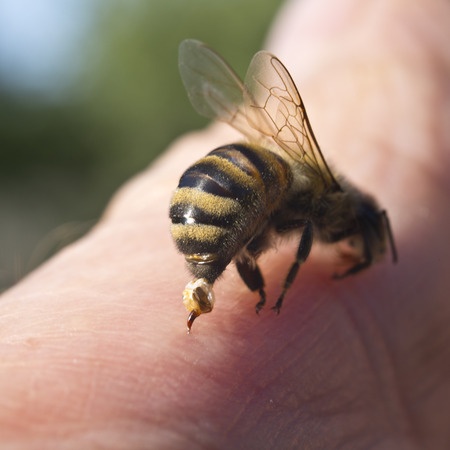Researchers Discover What Makes Honeybees Sting
February 12, 2018
Why are honeybees aggressive? What makes them more likely to sting than other bees?
According to a team of researchers from Australia and France (their research paper is titled “Proceedings of the Royal Society B”), honeybees are more inclined to attack due to a neurological mechanism. In other words, there are chemicals firing in the bees brains that make them more aggressive and looking to drop a stinger in anyone that dares mess with their hive.
If your childhood was anything like mine, you more than likely poked a bee hive out of morbid curiosity. It like a server telling you not to touch a hot plate, but you just cannot help yourself. It’s the same with a beehive… you have been told hundreds of times a swarm will come out, but you just need to see it for yourself.
In order to figure out what makes bees attack, the researches had to dissect the role of the different bees in the hive and how they communicate. Guards are responsible for protecting the hive and when the hive is in danger, they release pheromones to communicate that danger to the other bees in the hive.
Taking that into consideration, the researches divided bees into different groups according to their roles. They then were able to see that guard bees had higher levels of serotonin in their brains. They also noticed the guard bees were more inclined to sting than other bees. Their conclusion was the guard bees are secreting serotonin when communicating with other bees about an attack, thereby increasing the aggression level of the entire hive.
The group conducted further tests, revealing isoamyl acetate also increase serotonin levels, once again increasing the aggression factor in the bees. The more the bees were exposed to these pheromones, the more agitated they became, making them even more likely to sting.
The full published abstract reads:
The defence of a society often requires that some specialized members coordinate to repel a threat at personal risk. This is especially true for honey bee guards, which defend the hive and may sacrifice their lives upon stinging. Central to this cooperative defensive response is the sting alarm pheromone, which has isoamyl acetate (IAA) as its main component. Although this defensive behaviour has been well described, the neural mechanisms triggered by IAA to coordinate stinging have long remained unknown. Here we show that IAA upregulates brain levels of serotonin and dopamine, thereby increasing the likelihood of an individual bee to attack and sting. Pharmacological enhancement of the levels of both amines induces higher defensive responsiveness, while decreasing them via antagonists decreases stinging. Our results thus uncover the neural mechanism by which an alarm pheromone recruits individuals to attack and repel a threat, and suggest that the alarm pheromone of honey bees acts on their response threshold rather than as a direct trigger.
Now you know... just don’t get the guards of the hive upset and you have nothing to worry about!
Copyright: kozorog / 123RF Stock Photo


.jpg)



